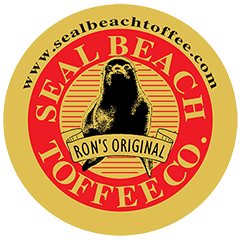Call Us At 1-562-493-3704
SEAL BEACH TOFFEE COMPANY
Premium English Toffee Anytime!
Call Us At 1-562-493-3704
A Sweet History of English Toffee
While the exact origins of toffee remain somewhat shrouded in mystery, food historians generally agree that it emerged as a distinct confection during the early 19th century. The word "toffee" itself first appeared in the Oxford English Dictionary in 1825, suggesting that it had already been gaining popularity for some time.
A Tale of Sugar and Butter
The rise of toffee can be attributed to the increased availability of sugar and butter during this period. As these ingredients became more accessible, confectioners began experimenting with new sweet treats. Toffee, with its simple yet indulgent combination of sugar, butter, and often nuts, quickly captured the public's imagination.
From Humble Beginnings to Global Delight
Initially, toffee was likely a homemade delicacy, enjoyed by families in their kitchens. However, as its popularity grew, it began to appear in confectionery shops and eventually made its way into mass production. By the early 20th century, toffee had become a beloved treat across Europe and beyond.
The English Touch
While toffee enjoyed widespread popularity, it was in England that it truly flourished. English toffee, with its distinctive buttery richness and often crunchy texture, became synonymous with the confection. The addition of nuts, particularly almonds, added a delightful contrast to the smooth, caramelized sugar.
A Timeless Treat
Today, English toffee remains a cherished classic, enjoyed by people of all ages. Its simple ingredients and straightforward preparation method have made it a timeless treat that continues to captivate taste buds around the world. Whether enjoyed on its own or as part of a dessert, English toffee offers a taste of history and a touch of indulgence.
Ron's Original English Toffee Continues the Traditions
For more than 30 years Ron's Original Toffee has been a tradition. Share the premium taste with someone special or treat yourself.!

